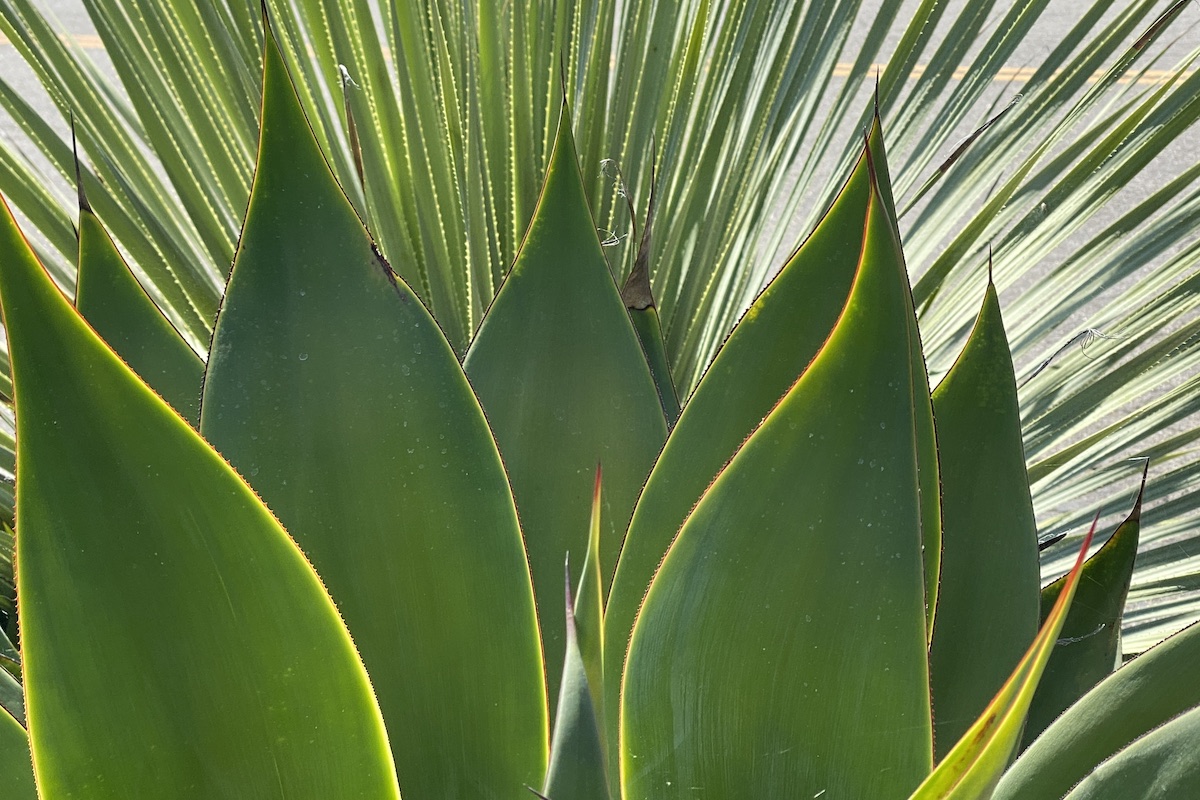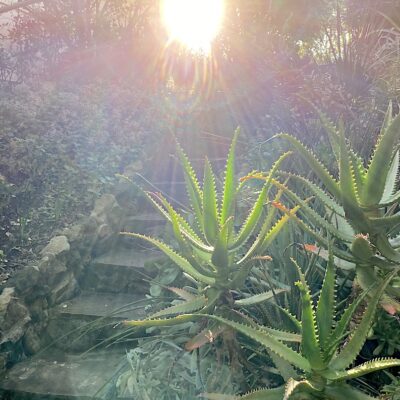
Late Summer Succulent Care
This video recently was recommended in Garden Design's weekly newsletter! If you've yet to visit the Garden Design site, you must. It's one of the best of its kind on the Web.
Excessive heat and sun can do as much damage as midwinter frosts. Use the summer care tips here and in my video to keep your succulents healthy when the heat hits.
Shade smooth-leaved and variegated succulents
Unless you live in a mild, maritime location, those that I call "the pretty little ones" will need protection from scorching summer sun. It's usually fine if they get several hours of early morning or late afternoon sun then bright or dappled shade the rest of the day. (See how I define Types of Shade.) But they're in danger of burning in strong late morning and early-to-mid afternoon sun. If need be, throw a sheet or shade cloth over exposed aeoniums, aloes, echeverias, kalanchoes, and the like.
Don't assume cacti are OK
Once established, most cacti, yuccas, agaves and other succulents native to Mexico and the Southwest sail through Southern CA summers. But keep in mind that even in their native habitats, young cacti grow beneath "nurse plants" that shelter them from harsh conditions. Don't let those babies burn!

Above: View from my deck during a mid-August heat wave that sent temps into the triple digits. I'm located midway between ocean and desert. When temps rise into the 90s in late summer, thunderheads appear in the eastern sky. Occasionally the storms drift this way and we see flashes of lightning and may even get rain.
watch your rock-garden plants
Sempervivums (hens-and-chicks) and sedums (stonecrops) thrive in the northern and eastern US and in Europe. Farther south, they suffer when nighttime temperatures stay above 70 degrees F. If possible, keep them shaded and cool. If not, consider them annuals. Btw, certain sedums (and Sedum crosses such as graptosedums) with fat, thumb-sized leaves may stress to shades of red and orange---not a bad thing.
Monitor soil moisture
Soil that goes bone dry may not kill thick-leaved and -trunked succulents, but if fine root filaments desiccate, growth will slow or cease. In pots you can test soil moisture by inserting a chopstick; if soil clings, it's moist. In the garden, increase the duration of auto irrigation. Supplement it with hose watering when woody perennials begin to droop.
Soak plants before leaving town
Generally if other conditions are met, succulents won't miss you if you water them well before you leave, then again when you return. As an extra precaution in case temperatures rise significantly while you're gone, move potted succulents into shade.
Don't stress over LOSSES
Gardening is a process, and sometimes the only way to know what will do well is to lose a few plants. Weather extremes lead to valuable lessons. Consider any casualties a learning experience, and fill gaps with tougher plants when weather cools.
See the video
 See my video on protecting succulents from summer heat and sun
See my video on protecting succulents from summer heat and sun
Related info on this site
Summer Care for Succulents: Heat and Sun Concerns
Don’t let summer sun and heat harm your succulents! Heat generally isn’t a concern. Although some succulents (like sempervivums) tend not to thrive in temps above 80 or 90 degrees F, the majority are fine. It’s heat plus sun that’s the concern.
Don’t Let a Heat Wave Ruin Your Succulents
You have two options for protecting your succulents from heat waves that follow cool weather:
1. Move them. Of course this is only possible if they’re in pots. But don’t forget to do it! When sudden heat and sun hit, succulents that haven’t had time to acclimate may sunburn. There’s no reversing the resulting brown or beige patches.


